Do you have a “been there, done that” attitude when it comes to many national parks? Then Big Bend National Park may just be the answer. This remote park is a real place to get away from it all and enjoy nature along the banks of the Rio Grande. You’ll find the best things to do involve outdoor activities from rafting to hiking, star gazing to birding.
That massive river, the border between Texas and Mexico, marks the location of Big Bend. Picture a map of Texas and where the river (and thus the boundary) makes a big bend, well, you guessed it. This remote region is home of this little-visited park where you can get away from the crowds.
With truly Texas-size proportions, the park spans over 800,000 acres–plenty of space for even those travelers looking for lots of elbow room. Below we’ll cover the best things to do in Big Bend National Park, traveling with a dog to the park, where to stay, and visiting nearby Big Bend Ranch State Park.
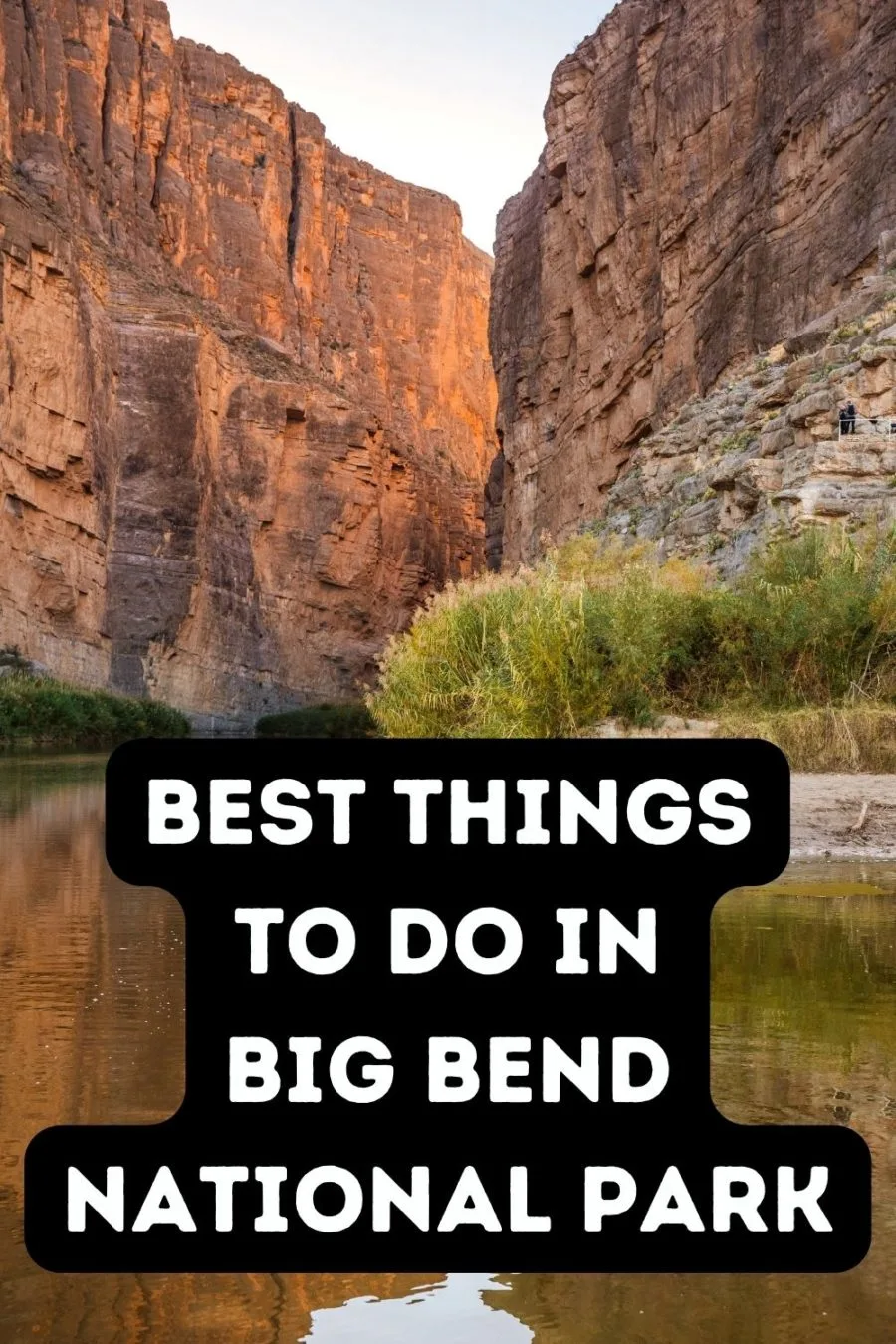
Table of Contents
How to Get to Big Bend National Park
Big Bend National Park is located in far west Texas. To get here, travel from Marathon (70 miles) on US 385 to the north entrance of the park or on TX 118 from Alpine (108 miles) to the west entrance. The west entrance can be reached by taking RR 170 from Presidio to Study Butte then TX 118 to the west entrance.
Want to fly in? The closest commercial air service is Midland (230 miles) or El Paso (325 miles).
Best Activities in Big Bend National Park
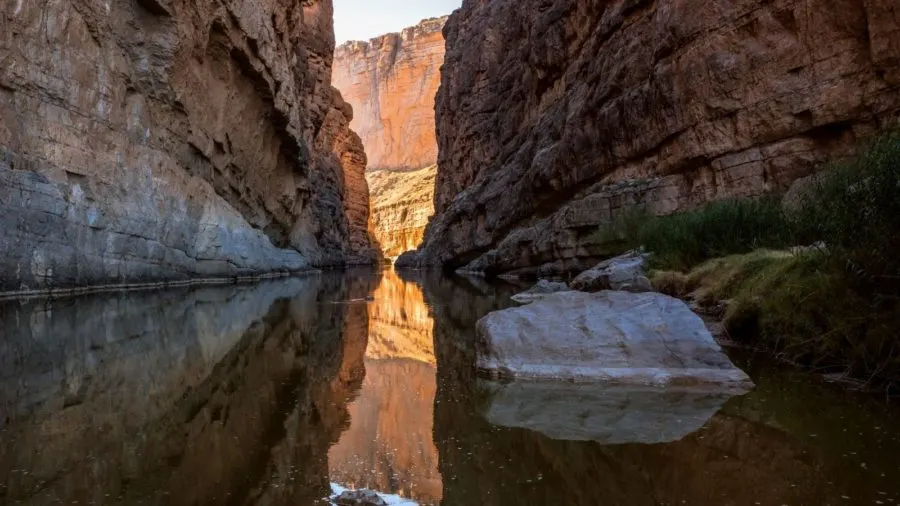
This isn’t a park for travelers looking for a lot of organized fun but if you are ready to make your own adventure it can be a great getaway.
Enjoy a scenic drive through the huge park for an overall look at the park; the best vistas are found on the Ross Maxwell Scenic Drive and the road to the Chisos Mountain Basin. (Don’t try these two while towing a trailer, though.)
You’ll also see plenty of dirt roads crisscrossing the park, but these are only recommended for those with high-clearance vehicles.
Hiking is definitely the number one activity; hikers can choose all grades of trails that span over 150 miles of the park.
Guided nature walks led by naturalists are offered year around (several a day in the peak months from November through April). Several outfitters located just outside the park offer Rio Grande float trip through the rugged canyons.
The park also offers wildlife viewing and birdwatching trips.Several outfitters located just outside the park can offer one of the most exciting ways to view this region aboard a float trip.
Four visitors centers are located at Persimmon Gap, Panther Junction, Chisos Basin and Rio Grande Village, each can provide more information about the rich archaeological history of the region as well as ecotourism activities.
Historic Sites in Big Bend
Much of the interest in the park includes its historic sites; the park is believed to contain an estimated 10,000 archaeological sites, although few are open to the public.
The Hot Springs Historic District includes pictographs on limestone cliffs, several preserved historic buildings, and a 105 degree hot spring enjoyed by many hikers.
The history of the park also includes events during the past century. After a raid on Juárez by Pancho Villa, the US Army began an aerial border patrol with a temporary landing field at Glenn Spring. Later an airfield was established at Johnson’s Ranch, a remote ranch and trading post on the Rio Grande.
Another historic stop for visitors is the ghost town of Glenn Spring, which, in the early 20th century, was home of a factory that produced wax using candelilla, a perennial desert plant.
Following several bloody raids, the community eventually became a ghost town and today all that remains of the community, accessible only by four wheel drive vehicle, is a cemetery and corral.
Taking Your Dog to Big Bend National Park
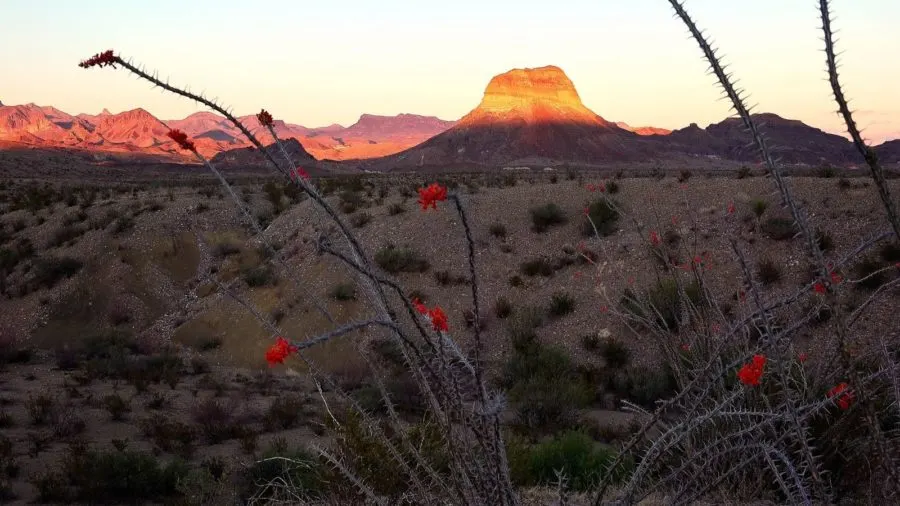
We love Texas’s national parks but, like most of the national park system, this park has strict rules regarding pooches and the park. Because of the delicate ecosystem in this desert, Big Bend National Park has even more restrictions that you see at many of the other parks throughout the country. Although you can bring Fido with you when you explore the park, the National Park Service has these fairly stringent pet rules to keep in mind:
- Pets are not allowed on any trails. We had heard that there was a single trail that permitted pets; we have talked with park rangers, and they explained that dogs are prohibited from using any trail. Dogs are only permitted on the roads and in campsites that you can reach by car.
- Pets must be always be leashed or in a crate. Leashes should be 6 feet or less in length.
- Pets can go anywhere your vehicle can go including campsites.
- Pets cannot be left unattended in vehicles if it creates a dangerous situation for them or for other park visitors. This can be especially true during hot weather. Planning to hike the trail or take a guided walking tour? If so, someone must be left to attend your pet while you are gone. The nearest boarding facility (and veterinary office) is in Alpine.
- Pet owners must tidy up after their pets.
- Pets cannot enter park buildings.
With those restrictions in mind, visiting Big Bend can still be an adventure you can share with your dog.
Enjoy a scenic drive through the huge park for an overall look at the scenery; the best vistas are found on the Ross Maxwell Scenic Drive and the road to the Chisos Mountain Basin. (Don’t try these two while towing a trailer, though.)
You’ll also see plenty of dirt roads crisscrossing the park, but these are only recommended for those with high-clearance vehicles.
Best Time to Visit Big Bend National Park
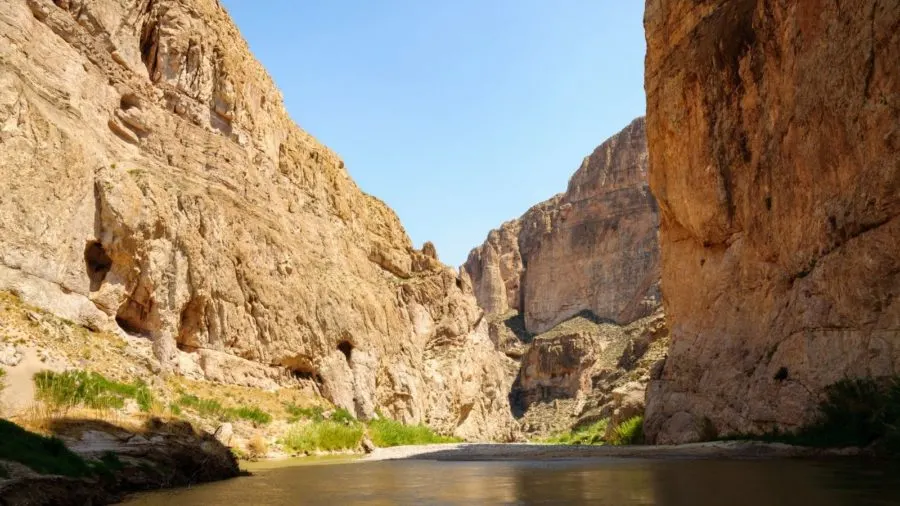
Big Bend National Park is perched in the southernmost area of the US and parts of the park are right on the desert floor. Here temperatures can be griddle-like in the summer months, but in the mountains you’ll find more temperate conditions. The hottest months here are May and June, with cooling rains starting in July and continuing through October. Winter temperatures are usually pretty comfortable but light snow can occur.
The best packing tips for this park are to come prepared (you’re not going to run out to the Wal-Mart and grab and extra layer if it does turn chilly). Be sure to bring a hat for everyone in the family, plenty of sunscreen, at least a gallon of water per person for every day you’ll be in the park, comfortable walking shoes, and any must-have items.
Visiting Nearby Big Bend Ranch State Park
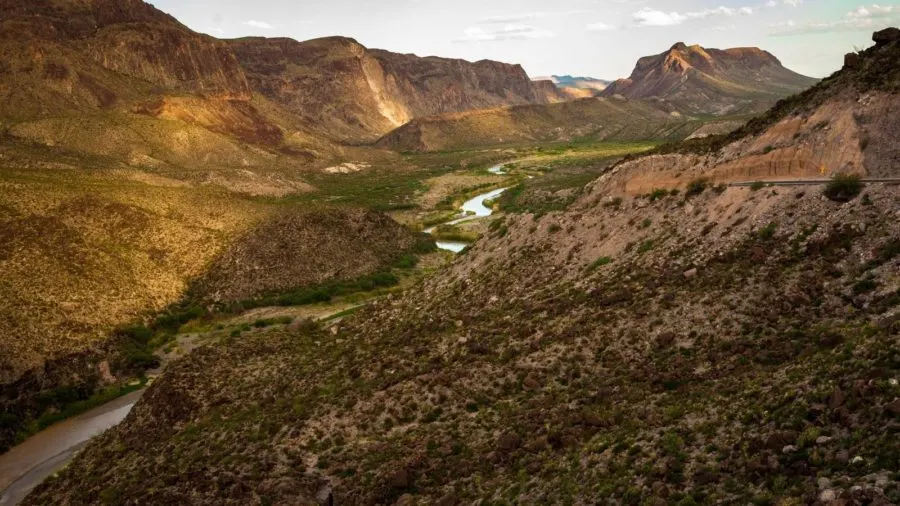
Like neighboring Big Bend National Park, Big Bend Ranch State Park is bounded to the west by the Rio Grande. Within its 311,000 acres (the largest of the Texas state parks), it presents rugged mountains, some of which are extinct volcanoes, canyons, and more than 500 sites which are noted for their archaeological significance including Native American pictographs dating from the Late Prehistoric and Protohistoric eras.
The high desert environment of Texas’s largest state park is rich with plant and animal life with ample opportunities for hiking, camping, birding, and observing the natural wonders of the park.
While dogs are not exactly encouraged here, they are allowed to enter the park with restrictions.
Like in other state parks, dogs are prohibited from entering buildings but they also cannot go on hiking trails, with the exception of the Closed Canyon Trail and the Hoodoos Trail and are prohibited from approaching any wildlife. Dogs are limited to venturing more than ¼ mile from a campsite or a park road.
Both the Closed Canyon Trail and the Hoodoos Trail are fairly short hikes (1.4 mile and 1 mile respectively) but they both offer spectacular desert scenery. Closed Canyon Trail is accessed through a “slot,” a narrow passageway which opens up to a view of the surrounding desert. The Hoodoos Trail is named for striking natural rock formations that line portions of the trail.
There are two entrances to the park. The western entrance is through the Fort Leaton State Historic Site on RR 170, a few miles east of Presidio. The eastern entrance is at the Barton Warnock Visitor Center located a mile east of the town of Lajitas on RR 170.
What to Pack for a Park Stay

Come prepared with layers of clothing, even during summer months when evening temperatures can be cool. Rain gear is also important in case of afternoon thunderstorms. Insect repellent is a must during summer months.
History of Big Bend
Although Big Bend is sparsely populated, it has been the home of man for since at least 8000BC, people who relied on bison and later agriculture for sustenance. Early inhabitants left behind pictographs and petroglyphs on the rock walls of the park.
By 1535, the region was home to the nomadic Chisos Indians, at least on a seasonal basis. They were displaced by the Mescalero Apaches around the 18the century and finally by the Comanches, who moved through the area making raids on Mexico into the mid 19th century.
While the Indians sought riches in Mexico, the Spanish were in search of gold and silver in this region starting in 1535. When Alvar Nunez Cabeza de Vaca led an expedition near Big Bend.
To protect the region from attack by Native American residents, eventually presidios were constructed and later abandoned because of their inability to stop invasions into Mexico.
After the Mexican War between Mexico and the US, miltary forts were constructed across the Trans Pecos region, including the construction of Fort Davis in Big Bend . Settlers began to migrate through the area, some settling to start ranches.
During the early 20th century, mining brought many prospectors to the area and the communities of Boquillas and Terlingua were formed. Farming grew as an industry as well in the Rio Grande flood plain.
By the 1930s, the state of Texas decided to preserve and acquire much of Big Bend , naming it Texas Canyons State Park. Eventually the state deeded the land to the federal government and the site became Big Bend National Park in 1944.
Where to Stay
You’ve got several choices when it comes to accommodations in the park. Lodging is limited, though, so at peak times (Easter weekend, spring break, Thanksgiving weekend, Christmas week) be sure to book early if you are planning to stay at the lodge (and come early if you’re hoping to get a campsite). The months of August and September are usually the quietest as kids head back to school and vacationers avoid the end of summer heat.
The park is home to the Chisos Mountain Lodge, which is operated by the National Park Concessions, Inc. This lodge, which is the only lodging in Big Bend National Park, has three cabins available for pet travelers: Roosevelt Stone Cottages 101-103. These charming, free-standing stone cottages have stone floors, refrigerator and microwave, coffee pot and ceiling fan. Summer travelers: please note that there is no air-conditioning in these rooms! You may want to lie on that stone floor with your dog to stay cool during the heat of the summer so please plan your trip accordingly. There’s a per pet, per night fee as well. Dogs cannot be left unattended in the cabin.
Campers have several options. Developed campsites are found at Rio Grande Village, Chisos Basin and Cottonwood. Each of these sites have water and restrooms. There is no advance reservation system on these sites so it’s first-come, first-served. At Rio Grande Village, you’ll find a full service RV park with hookups.
Families who are ready to do some backcountry hiking will find primitive camping opportunities. You’ll need a backcountry permit.
If you are camping with a dog, you’ll find several frontcountry developed campgrounds; two of them offer a limited number of reservations from mid-November through mid-April only. Pets are also allowed in backcountry campsites accessible by vehicle and must always be leashed. Primitive roadside camping requires a backcountry permit obtained in person at the visitors center.
In Big Bend State Park, campers have several options. Developed campsites are found at Rio Grande Village (100 sites), Chisos Basin (63 sites), and Cottonwood (31 sites). Each of these sites has water and restrooms. No hookups are available. Each campsite is limited to eight campers and two vehicles. Leashed dogs are only permitted within a quarter mile of the campsites. There is no advance reservation system on these sites so it’s first-come, first-served.
There are additional limited camping opportunities in the park and in nearby Terlingua. For additional accommodations, see the towns of Lajitas, Alpine, Marfa, Marathon, and Fort Davis.
For More Information:
- visit Big Bend National Park
